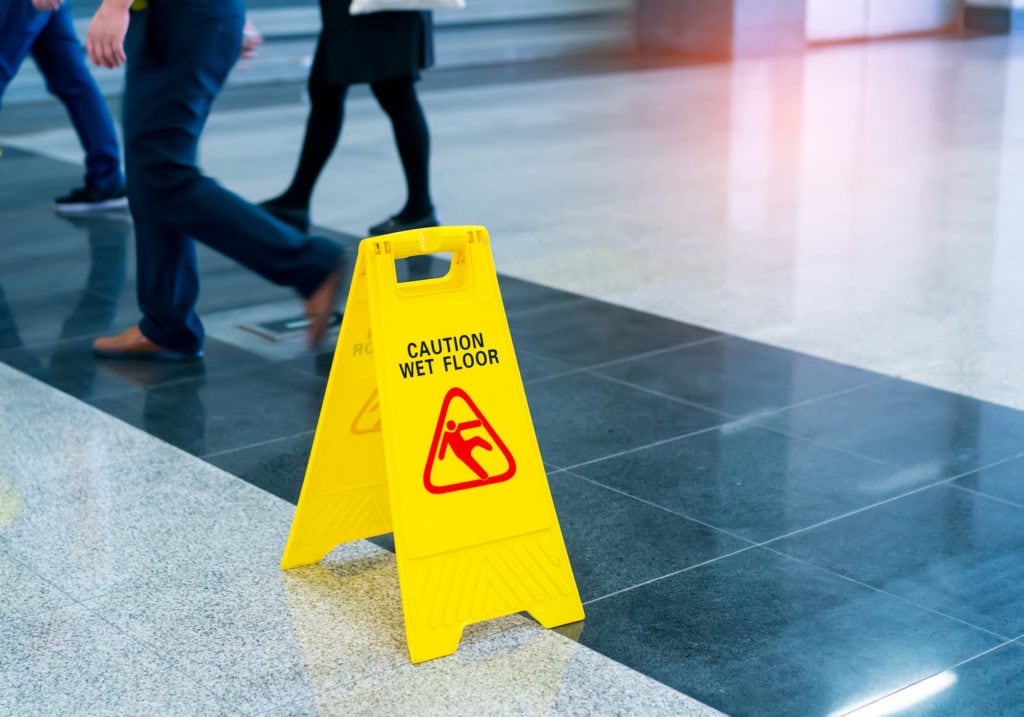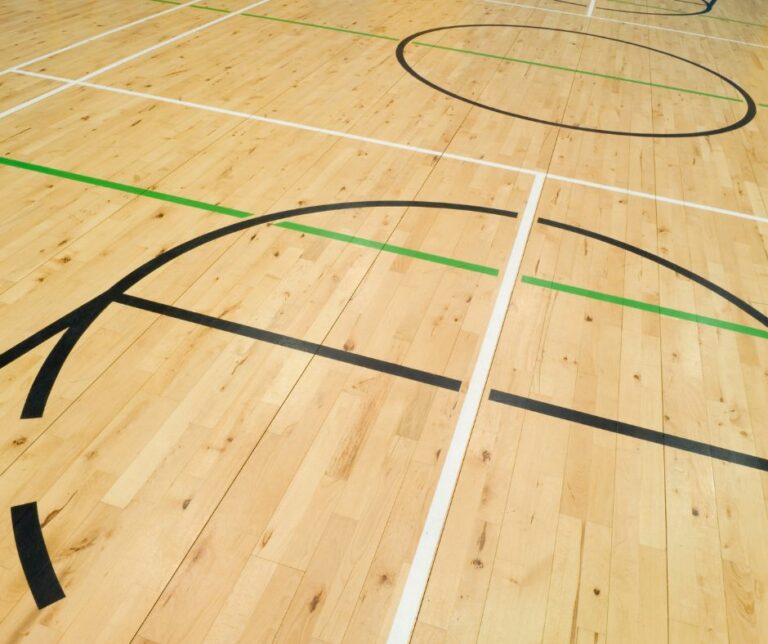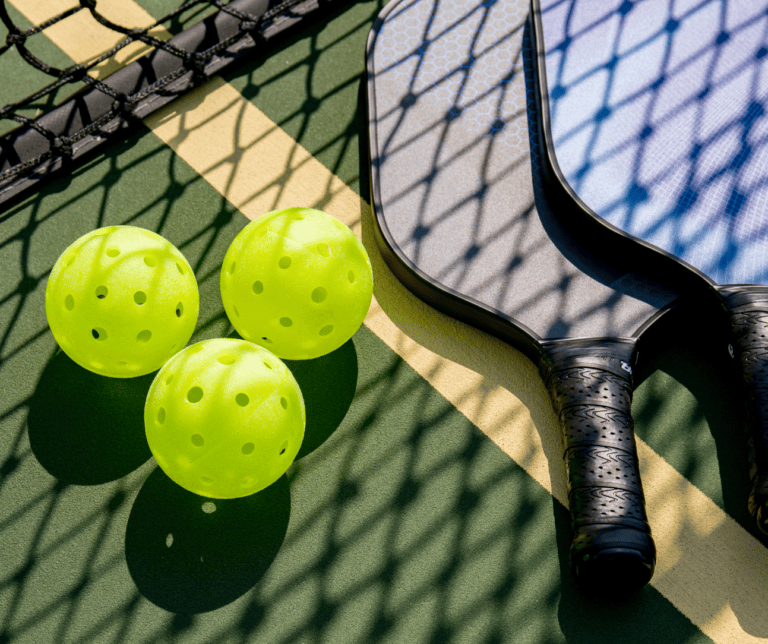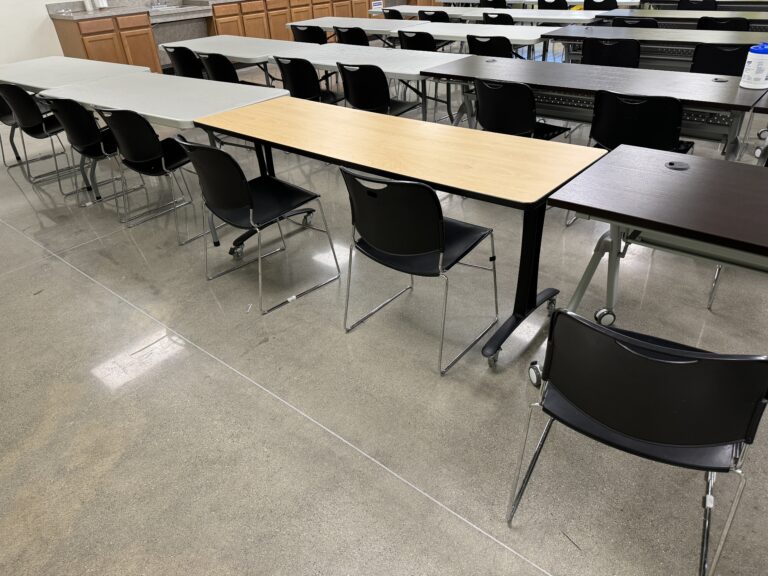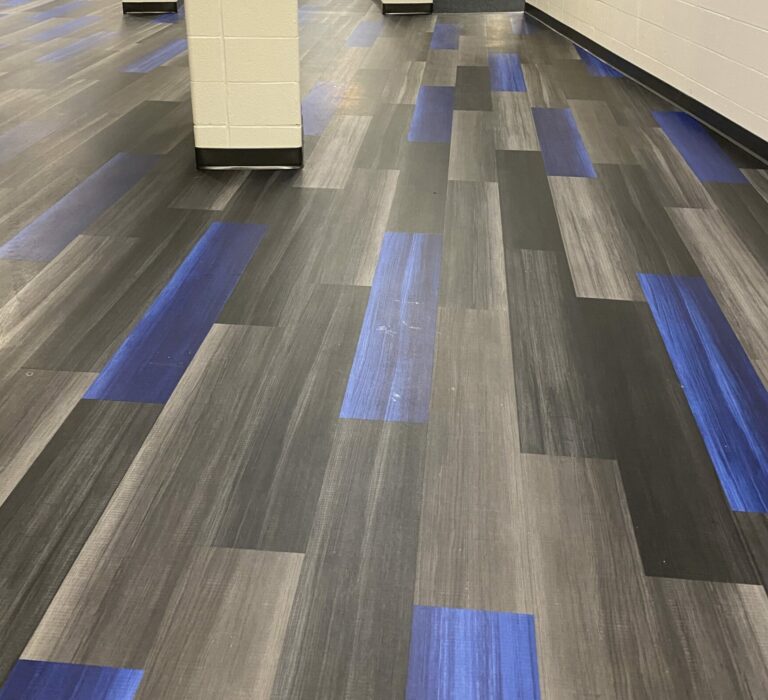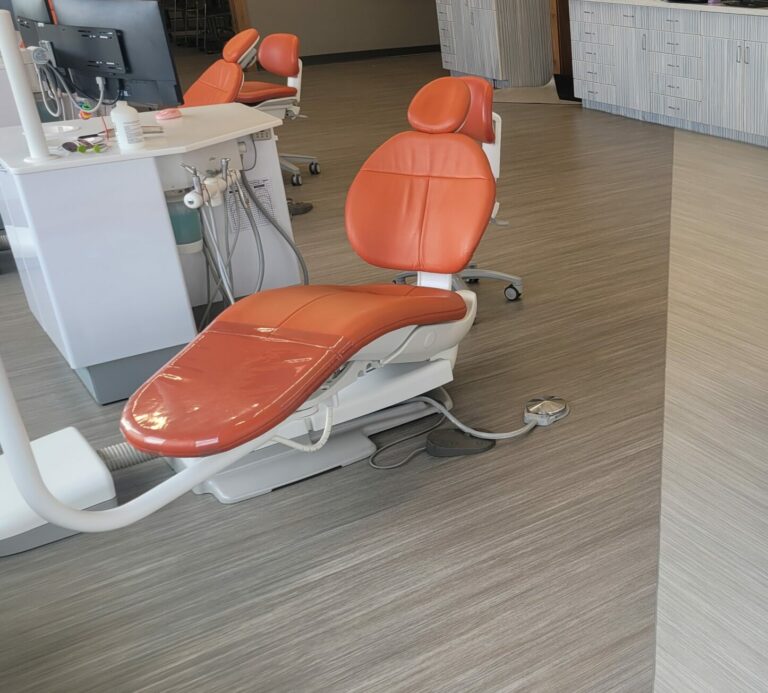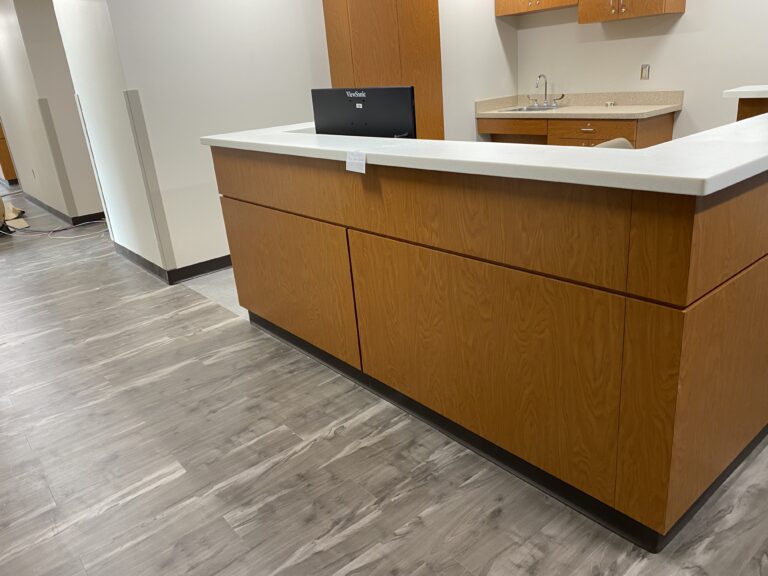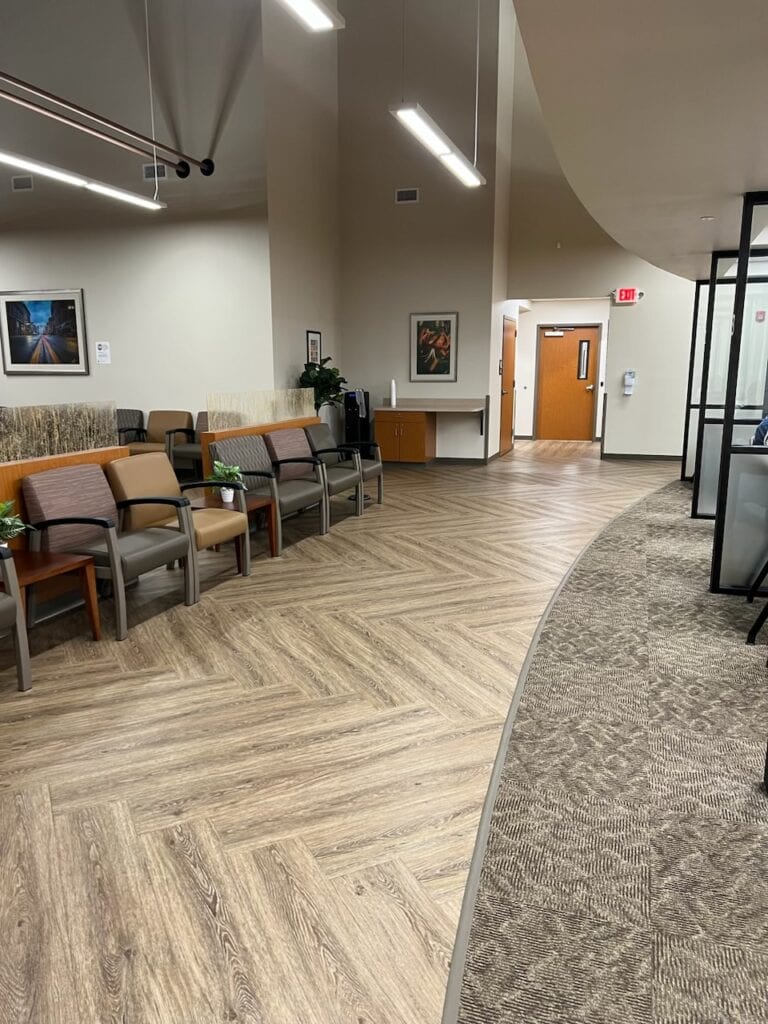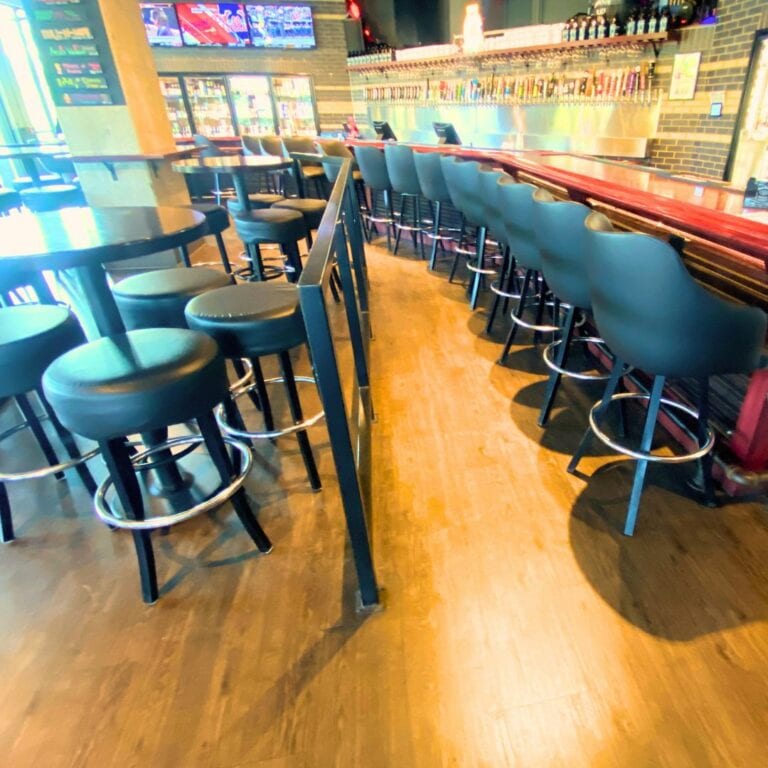During the winter, floors take a beating. Snow. Water. Salt. Ice. Slush. All tracked inside where they make contact with floors and have the potential of damaging carpet and polished floors.
When people walk in from the outside, they carry on their feet salt crystals and salt water that they’ve picked up in parking lots and sidewalks. The unfortunate reality is that the salt that does a great job melting snow and keeping people safe is really hard on floors. The salt crystals are abrasive and can scratch polished floors and abrade carpet fibers.
The heavier salt crystals usually fall off when people first walk into buildings. However, salt water can be carried much further into buildings. The diluted salt becomes a film on the bottom of shoes and can be spread everywhere a person walks. Once the saltwater evaporates, it leaves a white residue. This jeopardizes the long-term life and appearance of the floors and ultimately drives up the cost of investment.
Thankfully, there are a number of things you can do to help prevent this damage. In this article, we’re going to break down the what, why, and how of protecting your floors from winter damage. After all, your floors are an investment, and we want to help you protect that investment as much as possible.
Signs of Floor Damage
You may be wondering if your floors are already damaged by salt or water. If so, here is a list of things to look for that may be caused by winter salt and snow.
- Scratches and Marks – In the winter, pieces of asphalt and rock salt are brought inside. These materials can scratch surfaces and cut through a floor’s finish. The damage may begin as small scratches or imperfections, but they may grow and continue to break down the integrity of your flooring.
- Damage to Finish – Scratches from salt crystals can deteriorate the finish on your floor, but salt water can also cause the finish to dull and damaged. The salt corrodes and eats away at the finish, leaving the floor vulnerable to other problems. If the finish removal becomes too extensive, it can allow water and moisture to soak into your floors causing further damage.
- Floor May Dry Out – Road salt not only scratches and leaves residue behind, but it can also dry out the floor. The salt brought inside can pull moisture from your flooring, thus compromising the integrity of the flooring.
- Discoloration and Stains – Rock salt, mud, and water can cause stains and discoloration on hard surfaced floors and carpets. As the salt water evaporates, it leaves behind a white residue. Likewise, slushy snow mixed with mud can make floors look dirty and stained.
- Warping, Separating, or Rotting – If the floors are hardwood, they can take on moisture which can result in warping or eventually rotting. If moisture is not cleaned up, it can soak into hardwood floors. The hardwood floor may then begin to warp as the moisture saturates the wood. If the moisture continues to soak through it also runs the potential of damaging subfloors.
How to Protect Floors from Winter Salt Damage
If you’re looking for ways to prevent damage to your flooring, here is a list of things you can to keep your floors in good repair.
Use Alternative Ice and Snow Melting Methods
Salt melt is the number one method used to remove ice and snow. However, due to its corrosive nature, it can also be damaging to roads, sidewalks, infrastructure, and of course flooring. It may be worth looking into alternative snow and ice melting methods if you’re in charge of the maintenance of the sidewalks and parking lots around your home or building.
Some of these alternatives include:
- Potassium Chloride – Potassium chloride is a deicer comprised of chemicals similar to fertilizers. This type of deicer works in temperatures above eleven degrees and is less corrosive than rock salt.
- Magnesium Chloride – Magnesium chloride is another alternative to rock salt. It’s less corrosive in nature, and is effective in down to negative five-degree weather. However, it does have some drawbacks. It isn’t as corrosive to flooring surfaces, but it is corrosive to metal surfaces. In addition, if too much is used it can create a slippery surface, and it only works for a short period of time. It’s better used for a small amount of area as opposed to a full parking lot.
- Urea – Urea is also effective to temperatures as low as -5. It’s also less corrosive than rock salt. As an added benefit, it provides nitrogen to the soil which can promote plant growth. However, Urea may cake up after application and may still create cleaning issues.
Use Matting at Doorways
Another popular way of decreasing damage created by rock salt is by limiting how much gets inside. One way to do this is by installing temporary or permanent matting in entry areas.
Scraping mats can be placed either outside of an entrance or in an inner foyer. An additional absorbent mat can be placed inside to soak up additional water. Mats should be wide enough and long enough that most of the moisture and salt is removed from people’s shoes by the time they walk on the bare floor. Fifteen to eighteen feet of matting is recommended to reduce the spread of moisture and debris.
It’s a good idea to use matting that has a rubber backing to help prevent slipping. In addition, it’s helpful to remove excess water, debris, and dirt from mats with wet/dry vacs. You should also clean beneath mats as they can sometimes hold moisture against your flooring.
Reseal Your Floors
Resealing your floors may be a good option if they’re high traffic areas. This could be done annually if needed to vinyl, hardwood, tile and grout, and concrete. Resealing your floors is an excellent way to protect them from things like moisture and salt.
Create a New Cleaning Plan
Winter is not like other seasons and it requires a different cleaning regimen. To keep up with the snow, water, and salt, it’s a good idea to clean daily if possible. Here are some cleaning tips to help you keep you protect your floors.
- Carpeted floors and matting should be vacuumed as it is much more effective at cleaning than simply sweeping.
- As stated above, mats should be lifted up and allowed to dry. Mats hold a significant amount of moisture that can cause damage to your flooring. When your mats are drying, clean under them to remove moisture and debris.
- Sweep up any salt granules that have accumulated on hard floor surfaces during the day.
- Consider using two buckets when mopping. One can be used to take up the initial winter grime, and the next that can be used to finish cleaning with fresh water.
- Keep your cleaning supplies handy. In your cleaning closet, you’ll want to have: all-purpose cleaners, a cleaning solution made to remove ice melt, mops, buckets, and a wet/dry vacuum.
Increase Professional Cleaning in Winter
The best plan for preventing winter salt damage is to create an adjusted winter cleaning plan. This means frequent cleaning as well as deep cleaning. In most cases, it’s helpful to call in the help of professional cleaners to make sure that floors are getting the proper cleaning they need.
Professional cleaning companies know the correct cleaning solutions needed to remove salt residue, chemicals from the salt melt, and stains. They’re also able to use commercial equipment specifically designed to clean more thoroughly than non-commercial devices.
Cleaning maintenance is often more important in the winter than in the summer, especially in areas that have harsh cold winters with a lot of snow and ice accumulation. It’s important that you discuss your contract with a cleaning professional to make sure that you’re getting the most effective cleaning plan. You may need to have them come out more frequently in the winter, but may be able to slow down frequency in the summer.
Jack Laurie Group has been providing quality professional cleaning services for more than half a century. Through our extensive experience, we’re able to provide both service and customer focus. We offer carpet and hard surface cleaning and give your floors the utmost attention to detail.
It’s critical to give your floors the proper maintenance they need to ensure that they last many years, and we want to help you find the best solution. Contact us right away for a free facilities assessment and solution proposal.



